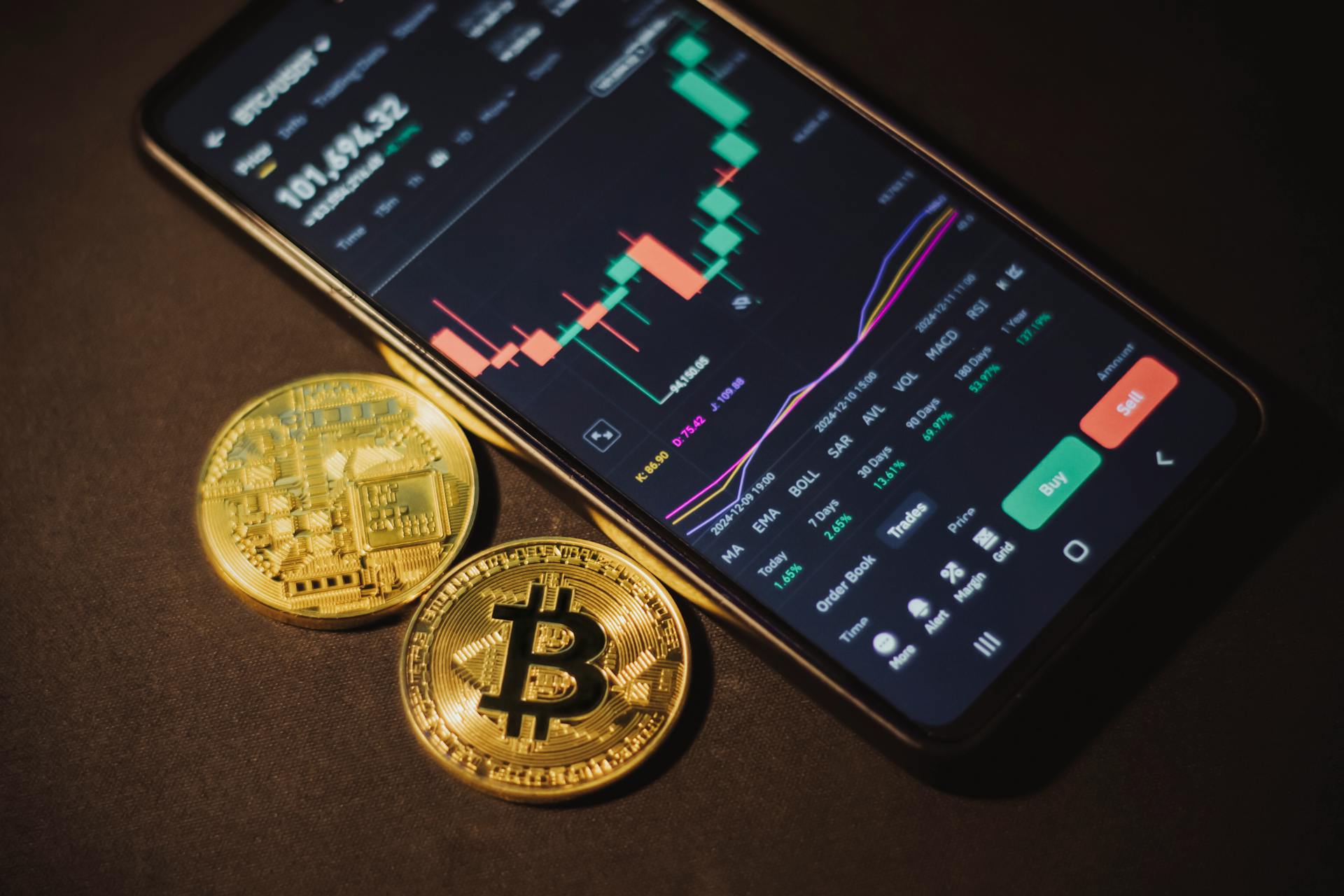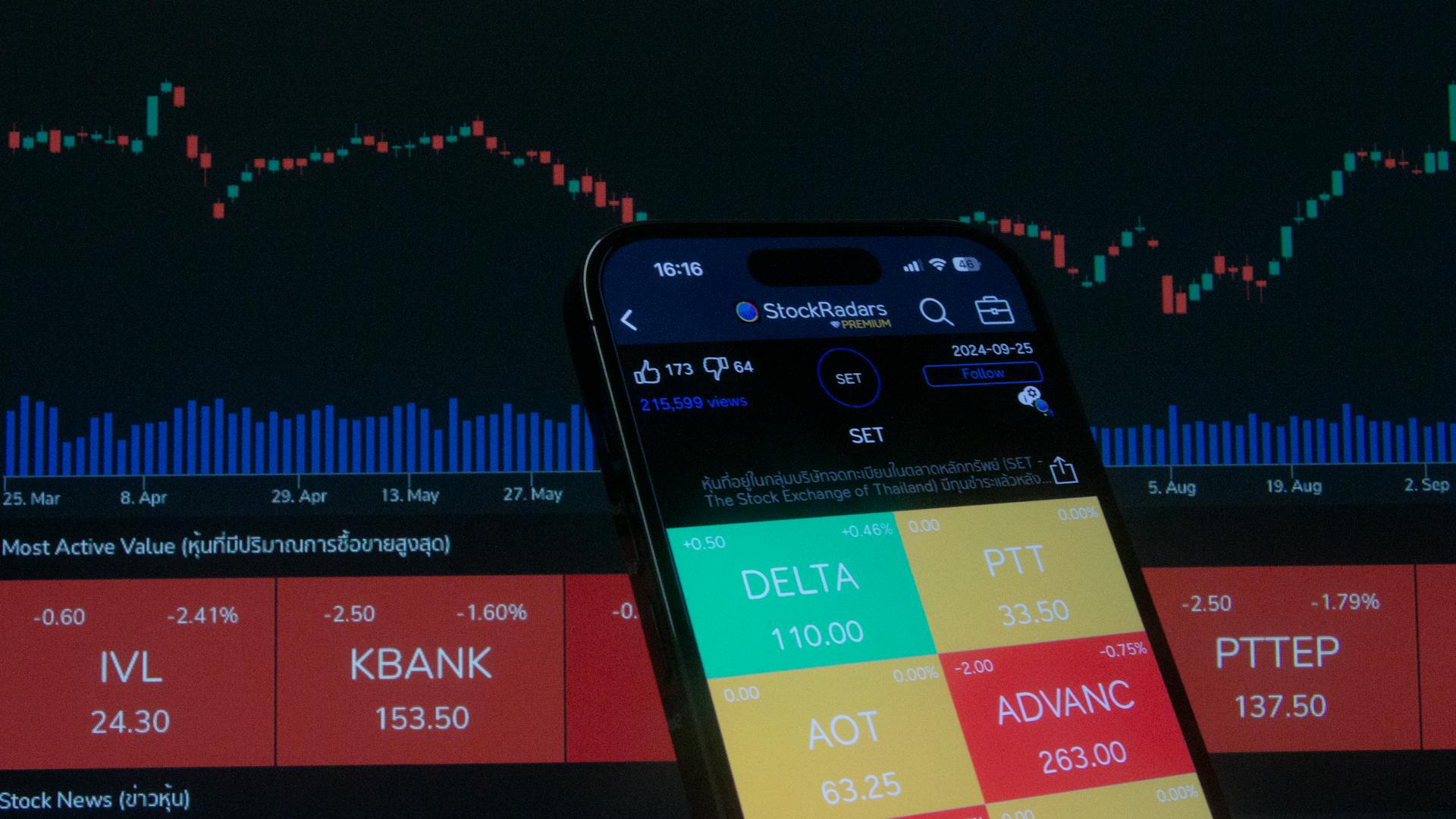
Adding money to your Bitcoin wallet is a straightforward process that requires a few simple steps. You can use a payment method such as a credit card or bank transfer to fund your wallet.
First, ensure you have a verified account on a reputable exchange or wallet service. This is a crucial step as it allows you to buy or transfer Bitcoin securely.
For credit card purchases, you'll need to enter your card details and confirm the transaction.
You might like: Can I Add More Money to My Secured Credit Card
Choosing a Wallet
If you're a first-time user, a mobile or web wallet is a good mix of safety and user-friendliness, perfect for buying or storing a relatively small amount of Bitcoin.
A more experienced user may choose a hardware wallet, which provides the best combination of security and usability, and is usually regarded as the top choice among long-term investors.
Your choice of wallet will depend on your level of experience and the amount of Bitcoin you want to store.
Intriguing read: At Which Bitcoin Amount Do I Need Offline Wallet
What Is a Crypto Wallet?
A crypto wallet is a digital tool that allows you to store, send, and receive cryptocurrencies.
You can store cryptocurrencies like Bitcoin and Ethereum with a crypto wallet, but it doesn't actually hold the physical currency. Instead, it keeps your private and public keys.
The public key is like an address you can share to receive funds, while the private key is like your password – it must be kept secret to give you control over your assets.
If you're making regular transactions, a hot wallet may be suitable, but if you're holding larger amounts of crypto for the long term, a cold wallet is a better option to keep your assets safe.
Recommended read: Receiving Bitcoins
BTC Wallet Types
If you're new to Bitcoin, you'll want to choose a wallet that's easy to use and provides a good balance of safety and convenience.
Mobile wallets are a great option for casual users, as they're user-friendly and widely available in all operating systems.
Paper wallets, on the other hand, offer great security, holding your BTC funds in cold storage, but they can be a bit fiddly to set up.
Hardware wallets provide the best combination of security and usability, making them the top choice among long-term investors, but they can be expensive for casual investors.
Web wallets are perfect for beginners, as they don't require any software installation, but they require private keys to be stored on an online server, controlled by a third party.
Desktop wallets are programs that run on your desktop or laptop computer operating system, providing decent security, but they're still hot wallets, creating a permanent attack vector.
If you're looking to buy or store a relatively small amount of Bitcoin, a mobile or web wallet will give you a good mix of safety and user-friendliness.
You might like: Bitcoin Atm Milwaukee - Coinhub
Transferring Funds
Transferring funds to a Bitcoin wallet is a relatively straightforward process, but it does require some attention to detail. Generally speaking, the process involves withdrawing your Bitcoin from an exchange and transferring it to your wallet of choice, using the "Withdraw" function or "Send" option.
To ensure a smooth transfer, make sure to double- and triple-check each step, especially when entering the recipient's wallet address, which is typically a string of letters and numbers that can be over 40 characters long. If the address is off by even one character, your assets may be sent to the wrong location, and there's a good chance you won't be able to recover them.
Here are some key things to keep in mind when transferring funds:
By being mindful of these details, you can ensure a successful transfer and keep your assets safe.
Using Coinbase: Bank Money Transfer
To transfer funds from your bank to a Bitcoin wallet using Coinbase, you first need to connect your bank account to a reliable exchange. This allows you to purchase Bitcoins using your bank account.
To do this, you'll need to link your bank account to Coinbase, which is a popular exchange for many cryptocurrencies. It's a relatively straightforward process that can be completed online.
Broaden your view: Can I Add Paper Money to Venmo
Once your bank account is linked to Coinbase, you can purchase Bitcoins using your bank account. You can then transfer these Bitcoins to your desired Bitcoin wallet using the specific Bitcoin address.
Coinbase allows you to transfer funds directly from your bank account to your Bitcoin wallet. This can be done by purchasing Bitcoins using your bank account and then transferring them to your wallet.
Here are the steps to link your bank account to Coinbase:
- Go to Coinbase.com and sign in to your account
- Click on "Accounts" and then "Link a Bank Account"
- Select your bank and follow the prompts to complete the linking process
It's worth noting that Coinbase is a popular exchange, but it's not the best place to store Bitcoin for the long haul. Adding your BTC to a crypto wallet is always the safest choice for storing your assets.
How to Send
Sending cryptocurrency is a relatively straightforward process, but it does require some caution to ensure the funds are transferred successfully.
To send bitcoin, you'll need to know the recipient's wallet address, which is a string of case-sensitive numbers and letters that can vary in length from 26 to 35 characters. You can also use a QR code to scan and translate it into the alphanumeric address.
Recommended read: Is Bitcoin Address Case Sensitive
Double-check the recipient address before clicking "Withdraw" or "Send" to avoid sending the funds to the wrong location. If the address is off by even one character, your assets may be sent to the wrong location, and there's a good chance you won't be able to recover them.
You'll also need to choose the correct blockchain network, as failure to do so will likely result in losing access to your assets forever. Many exchanges allow you to generate new wallet addresses based on the network, so consider asking your recipient to create a new wallet if you're unsure.
Here's a step-by-step guide to sending bitcoin:
1. Log in to your cryptocurrency wallet.
2. Select the send cryptocurrency option.
3. Input the destination wallet address.
4. Input the amount of bitcoin to send.
5. View transaction fees for sending bitcoin.
6. Confirm transaction.
Note that some services, like Cash App, may allow you to hold and send bitcoin without having your own wallet, but this may come with some limitations.
Check this out: Carolina Bitcoin Network
Transfer Time for Other Cryptocurrencies
Ethereum transactions average roughly 12 seconds as of early 2023.
Some cryptocurrencies process transactions in near-instantaneously, while others can take hours.
The Lightning Network can speed up bitcoin transactions to under a minute, or even milliseconds.
Certain transactions can take as long as days to process if the network is congested.
Intriguing read: Bitcoin Lightning Network Wallet
Considerations for Transferring Other Cryptocurrencies
Transferring other cryptocurrencies requires careful consideration to avoid mistakes that can be costly. Make sure to double-check each step before proceeding, as making a mistake could mean losing access to your assets forever.
You'll need to enter the correct wallet address, which can be over 40 characters long, and is typically a string of letters and numbers. If the address is off by even one character, your assets may be sent to the wrong location.
Be certain you've entered the right amount to send, as there is no central authority that can refund faulty transactions. Unlike credit card payments, crypto transactions are irreversible.
The blockchain network is also crucial to consider. Make sure to select the same network as the recipient's wallet, as failure to do so will likely result in losing access to your assets forever.
Transaction fees are built into the transfer process, and the sender typically pays them. Fees can vary based on the blockchain network's congestion and the cryptocurrency being transferred.
Here's a quick checklist to ensure a smooth transfer:
- Correct wallet address
- Correct amount
- Correct blockchain network
- Transaction fee consideration
By following these steps, you can minimize the risk of losing access to your assets and ensure a successful transfer.
Adding Funds to a Wallet
Adding funds to a Bitcoin wallet is a straightforward process that involves obtaining a Bitcoin address and transferring funds from an exchange or another wallet. You typically need to know your wallet's password and address to proceed.
To obtain the address for your wallet on an exchange like Binance, go to the "Overview" section in the main menu and choose the currency and network you want to use. Leaving your cryptocurrencies in the exchange wallet is one of the riskiest decisions you can make.
Explore further: Money Market Mutual Funds vs Money Market Account
The process of adding funds to a Bitcoin wallet is generally similar for a wide range of different wallets. You simply withdraw your Bitcoin from the exchange and transfer it to your wallet of choice.
Here's a quick summary of the steps involved in adding funds to a Bitcoin wallet:
- Know your wallet's password and address
- Withdraw your Bitcoin from the exchange
- Transfer it to your wallet of choice
One of the simplest ways to deposit Bitcoin is through a direct purchase on a platform like Cryptomus, which streamlines the process and makes it easy and fast. The platform requires you to sign up for an account and enable 2FA and set a PIN to protect your wallet.
To deposit BTC on Cryptomus, you need to pass the KYC procedure, which involves entering your account settings and filling in the required information. You can then click "Receive" on your personal wallet, select the currency and network, and choose "Fiat" as the type of receive option.
The process of depositing Bitcoin on Cryptomus typically takes a few minutes, depending on the used blockchain network's speed. Once you've successfully deposited Bitcoin, the next step is to wait for the funds to be credited to your personal wallet.
Related reading: How to Receive Money from Western Union to Mobile Wallet
Sources
- https://www.fidelity.com/learning-center/trading-investing/how-to-transfer-bitcoin
- https://uphold.com/en-us/digital-wallet/bitcoin-wallet
- https://financebuzz.com/how-to-send-and-receive-bitcoin
- https://cryptomus.com/blog/how-to-add-money-into-a-crypto-wallet
- https://materialbitcoin.com/en/blog/add-bitcoin-to-wallet/
Featured Images: pexels.com


